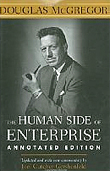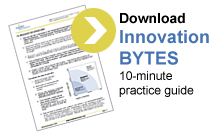In this post we continue to explore “The Assumptions of Theory Y,” provided by Douglas McGregor in his seminal book, The Human Side of Enterprise.
Assumption 3: Commitment to objectives is a function of the rewards associated with their achievement. The most significant of such rewards, e.g., the satisfaction of ego and self-actualization needs, can be direct products of effort directed toward organizational objectives.

In his article, A Theory of Human Motivation, Abraham Maslow defines self-actualization as the desire for self-fulfillment, namely the tendency for the individual to become actualized in what he is potentially. A basic definition from a typical college text book defines self-actualization according to Maslow simply as “the full realization of one’s potential.” People who have reached self-actualization tend to be spontaneous, interested in solving problems and accepting of themselves and others.
So, if commitment to objectives is more likely when rewarded by satisfaction of self-actualization needs, and self actualization can be direct products of effort directed toward organizational objectives, what are the conditions that make this most likely to occur? Considering the ideas below, which ones would be on your list? How would you rate these conditions on a scale from 1 to 5 where 5 = strong presence and 1 = weak presence? What else would you add?
- Alignment exists between my core values and the organizational objectives (see Assumption 2).
- The leadership in the organization values collaboration.
- I feel some degree of creative freedom and flexibility in my work.
- I feel valued for my strengths, gifts and talents by management and my co-workers.
- There is a commitment of resources for my professional development.
- I work in a culture of innovation.
- I have a Chief Culture Officer.




 Posted by mindfulinnovation
Posted by mindfulinnovation 

 Leadership is a call to each and every one of us; a call to listen to what’s really needed in our own lives, families, organizations and communities. Leadership is about service to ourselves for the sake of being the best we can be; to each other for the sake of supporting and sustaining strong, productive and healthy relationships; and to our community and organizations for the sake of building and sustaining health, wholeness, productivity and fulfillment.
Leadership is a call to each and every one of us; a call to listen to what’s really needed in our own lives, families, organizations and communities. Leadership is about service to ourselves for the sake of being the best we can be; to each other for the sake of supporting and sustaining strong, productive and healthy relationships; and to our community and organizations for the sake of building and sustaining health, wholeness, productivity and fulfillment.

